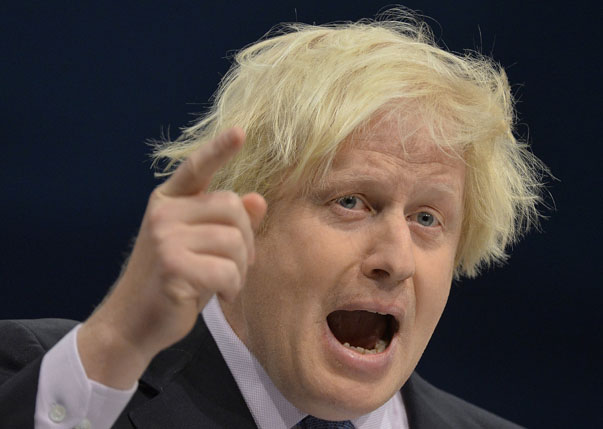A galaxy of Conservative stars dazzled the faithful in Manchester today, with Jeremy Hunt, Michael Gove, Iain Duncan Smith and Boris Johnson all taking to the podium.
The mayor of London’s speech was long on jokes but short on substance, while the cabinet ministers had some work to do in defending controversial policies.
But did everyone pass the FactCheck test?
 “London is in fact now the safest global city in the world.”
“London is in fact now the safest global city in the world.”
Boris Johnson, 1 October 2013
We’ll forgive Mr Johnson for singing the praises of the capital, but not for the first time, he strained factual credulity with this claim.
Perhaps surprisingly, the mayor was right to say that you are around twice as likely to be murdered in Brussels than in London – a trend he variously attributed to the use of poisoned profiteroles and lobster picks in the Belgian capital.
There are of course other indicators of safety, like other categories of violent crime, but international comparisons are dubious since the way crime is reported to and recorded by the police can vary wildly in different countries. Murder is generally easier to compare.
The latest United Nations figures show that there were three intentional homicides per 100,000 people in Brussels in 2009 (the latest year covered by the stats) compared to 1.6 in London.
The same figures show that Mr Johnson is exaggerating to say that London is the world’s safest major city. Madrid, Rome, Paris, Toronto, Sydney and Tokyo have enjoyed lower murder rates in the last few years we know about.
But the homicide rate has fallen consistently in London in recent years, putting London at the safer end of the scale and making a flattering comparison with some major cities like New York and Amsterdam.
 “In 2010 18,000 people waited more than a year for their operation. Now it’s less than 400.”
“In 2010 18,000 people waited more than a year for their operation. Now it’s less than 400.”
Jeremy Hunt, 1 October 2013
We can confirm that the health secretary is absolutely correct on this point, but he didn’t tell the audience the whole story.
The stats are here, and they show that there were 18,458 people waiting for than 52 weeks for an op (“incomplete referral to treatment pathways” is the jargon) at the time of the last general election in May 2010.
In the latest month we know about – July 2013 – there were just 371 people.
Mr Hunt included this in a long list of achievements which he said were “all thanks to our prime minister, David Cameron”. But that’s not really true.
Go back to the earliest figures we have, from 2007/08, and you find that there were 578,682 people waiting for more than one year. That shrank to just under 18,500 by the time of the election, as we have seen.
So in about three years of Labour the waiting list shrank by more than half a million. And in about the same amount of time under the coalition it has fallen by just over 18,000.
Perhaps we’re being churlish in pointing this out. After all, there has still been a dramatic improvement under the coalition.
But we’re going to have to mark Mr Hunt down for being a bit sneaky here. What he failed to mention is that NHS England issued a directive that there should be NO patients in the plus-52-week category after 31 March this year.
So what the latest figures show is that we have failed to hit the “zero tolerance” target so far, to the tune of several hundred patients. Only a politician could make a missed target sound like a triumph.
And Mr Hunt is only looking at one positive indicator from the whole complex world of NHS waiting time data. Other statistics paint a less rosy picture.
The independent King’s Fund think-tank makes it clear in its latest assessment of the overall health of the NHS that A&E departments are under particular pressure.
In the first quarter of 2013 the target that no more than 5 per cent of patients should not wait more than four hours was widely breached. Things improved somewhat from April to June, but 4.3 per cent of patients still had to wait more than four hours.
That’s the equivalent of 241,000 people and the highest proportion of patients kept waiting since 2004/05.
Similarly, the proportio of patients waiting more than four hours to be transferred from A&E to a hospital bed is at its highest since 2004/04.
That doesn’t mean the NHS is dissolving into chaos. We’ve picked Labour up in the past for exaggerating bad news on waiting times, and we should point out that other key indicators like the percentage of patients treated within 18 weeks, are stable.
And in fairness, other achievements listed by the health secretary are factually correct. Rates of MRSA and C dif infection in hospitals have indeed gone down dramatically under the coalition.
As Mr Hunt said, mixed-sex wards are disappearing fast and yes, rightly or wrongly, numbers of clinical staff are rising while the number of NHS managers plummets.
By Patrick Worrall





